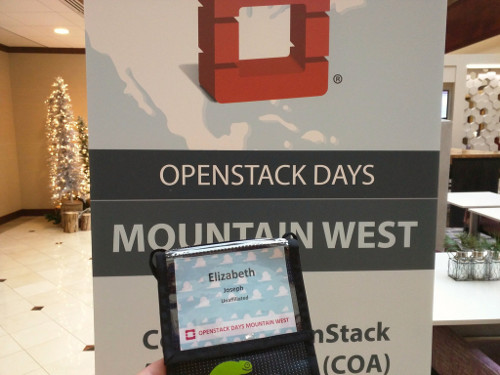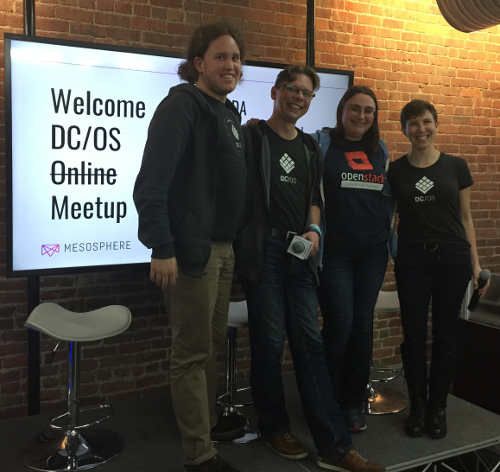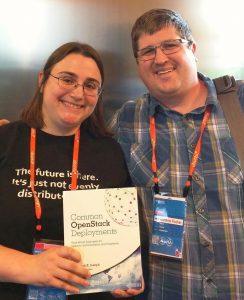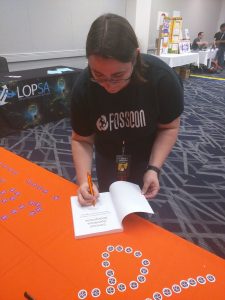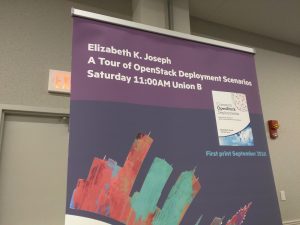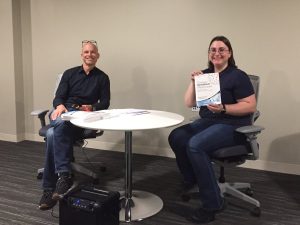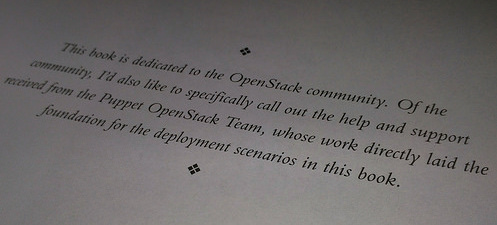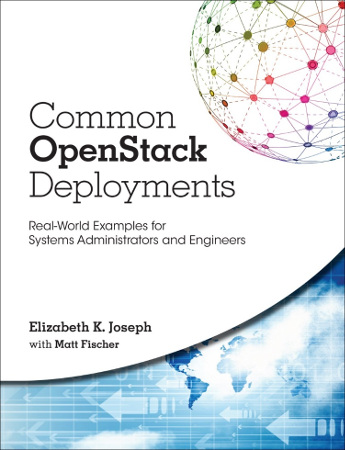A couple names on the cover of a book tells you very little about how many people have contributed. The book has an Acknowledgments page, but I figured it would be a bit more public about how grateful I am for their participation in making this book happen.

I always knew I wanted to work with someone on this book. Early on in my work, I found a few people who offered guidance and did some very early reviews of my first chapters, including Ola Peters, Joe Gordon, Eric Windisch and Christian Berendt. Unfortunately these busy, accomplished people weren’t able to join me in the by-line for the book, so I continued my search!
At the OpenStack Summit in Vancouver for Liberty I finally found my contributing author, Matt Fischer. We had known each other through work in the Ubuntu community but first met to seriously discuss his involvement at that summit. The book truly wouldn’t have such functional deployment scenarios without his enterprise-level expertise with OpenStack. He was also able to reach out to his colleagues Clayton O’Neill, Eric Peterson and Adam Vinsh in areas where they were able to lend their expertise, including Puppet, Horizon and Swift.
I had already been going in the direction of using Puppet for all the deployment scenarios, but given Matt’s experience and the exceptional OpenStack Puppet team, I was ready to go full in with the Puppet-driven book. The OpenStack Puppet project team lead Emilien Macchi helped out with some of our examples, and OpenStack Puppet core Colleen Murphy did a considerable amount of work testing and debugging all the scenarios with us.
There were then subject matter experts. Mike Perez helped with the chapter about Cinder block storage. I had Gordon Chung to work with on Ceilometer metering. John Dickinson of Swift put me in touch with Donagh McCabe, Matthew Oliver, Hisashi Osanai, Christian Schwede and Kota Tsuyuzaki, all of whom had an impact on improving the Swift object storage chapter. After Devananda van der Veen prophetically convinced me to include an Ironic bare metal chapter, Julia Kreger stepped up to review and even did a lengthy video call with me to walk me through how everything fit together. Charlie Crawford chipped in by offering some tips about containers and reviewing that chapter from outside the OpenStack world. I was also fortunate to be local to James Downs, whose networking expertise helped with review of the networking chapter with a focus on OpenStack, and took the time to go over a pile of network diagrams over beer one evening.
There were also some folks I brought in from outside the OpenStack space. My sysadmin friends Jonathan DeMasi and Brent Saner offered their systems perspective, which was very valuable since they are the target audience for the book. They helped make sure the book didn’t make too many assumptions about the cloud-specific expertise of the reader and explained all the concepts clearly. Web developer Pasi Lallinaho, who I work with on the Xubuntu project, also played a role, helping make the HTML pages I serve up in the deployment scenarios are much prettier than I came up with myself.
I also had four people who reviewed the whole book, José Antonio Rey, Mohammed Arafa, Doug Hellman and Chris Zahn. José dutifully tested every single scenario in the book and worked with me when he had trouble with the environment. Mohammed kept me on my toes with clarity and consistency edits, along with offering advice from his own experience with OpenStack. Doug brought his incredible knowledge of OpenStack, the OpenStack community and expertise as a writer to the table as he not only reviewed the book, but gave me the confidence that I was writing something that would be valuable. Chris was my technical editor from Prentice Hall who cleaned up grammar (I seem to have a problem with “that” and “which”) and made sure everything flowed as a clear journey for the reader through the book.
My editor Debra Williams Cauley has been exceptional. We spent almost two years working together on this book and she offered advice, guidance and support throughout. Some parts were really tough to get through, but she made sure we made it to the other side.
My journey in OpenStack would have never been successful without the OpenStack Infrastructure Team, a group of brilliant people who I get to work with every day. My role on this team made me feel comfortable with OpenStack and their support through all my projects on the team has never wavered. I routinely feel honored to count myself as a member of the team that keeps the OpenStack project Infrastructure running well from release to release.
Finally, I had a lot of support from friends and family through this. My co-author on the two editions of The Official Ubuntu Book I’ve worked on, Matthew Helmke, was always ready with a kind word of encouragement or a quick call when I ran into road blocks. My husband Mike Joseph was incredibly supportive throughout, even when I got grumpy or thought I couldn’t finish. He even bought a copy, even though I have a whole pile of them!

